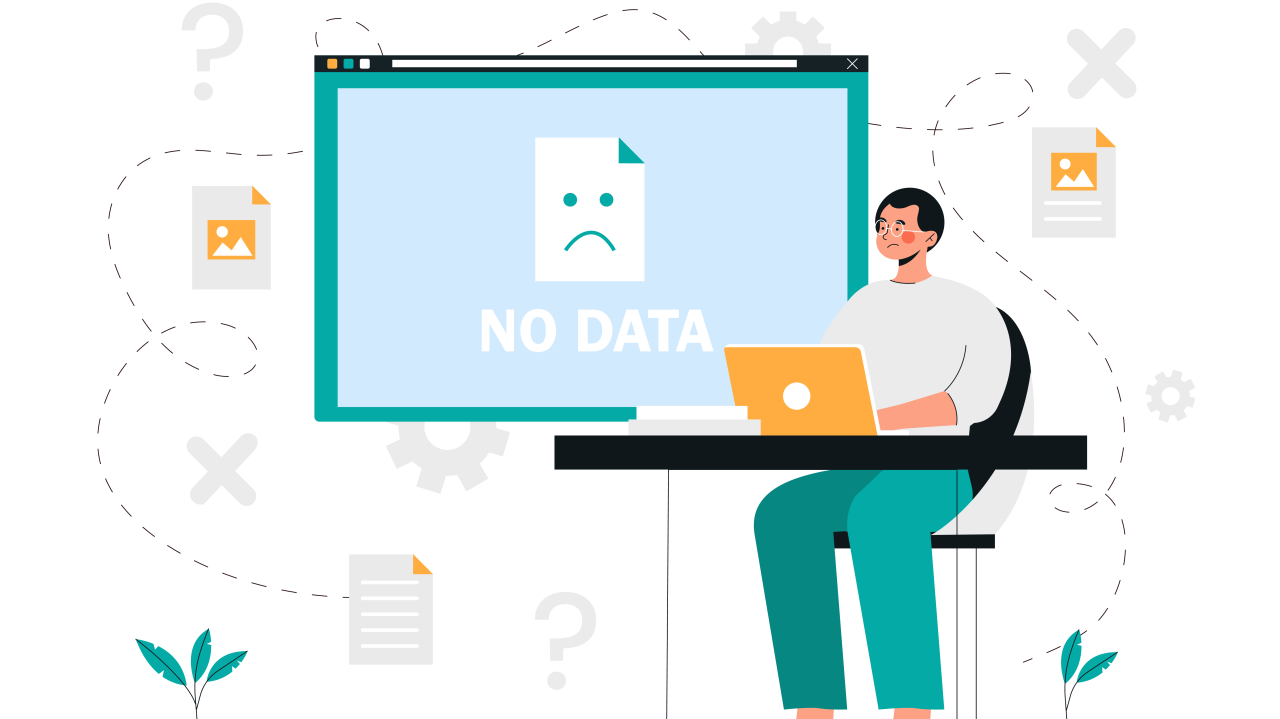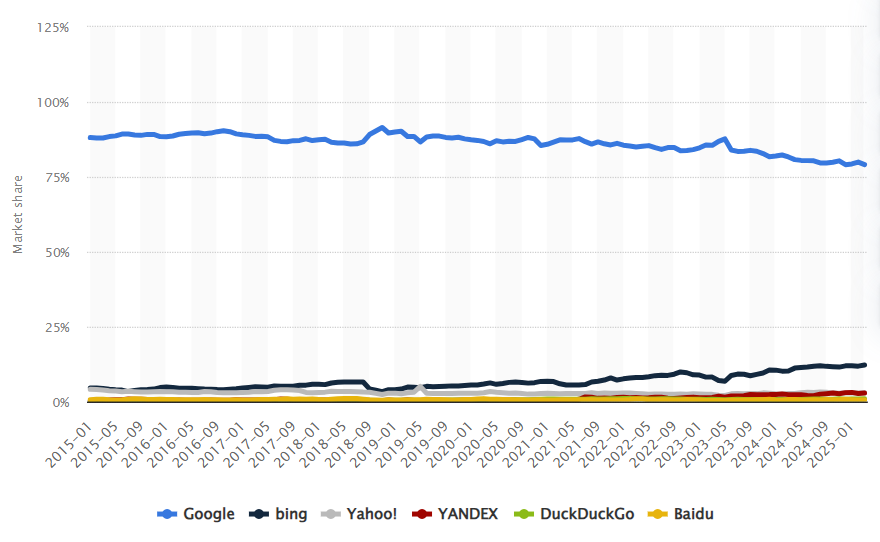
Search Engine Journal recently published an interesting analysis of user search behavior when provided with AI overviews in their results. The statistic that caught my eye was that clicks from search dropped anywhere from 50-66% when AI previews appear in results.
Clicks from search dropped anywhere from 50-66% when AI previews appear in results.
The SEJ researchers focused their attention on Google, but it’s also worth noting that ChatGPT (and Bing/CoPilot) are starting to make serious dents in Google’s market share.
This trend toward AI-driven search means you’re going to lose two extremely valuable marketing data streams:
- Search performance data—if you haven’t already, you’re going to see declines in keyword and page performance data for metrics like clicks and click-through rate.
- Website analytics— less traffic gives you less information on content performance and engagement.
Your website analytics issue will grow even more challenging if you’re operating a tracking consent framework. Our clients using these tools show up to a 50% reduction in analytics data when consent mode is enabled.
Consent mode further reduces your on-site analytics data volume by up to 50%
So now we’re faced with a traffic loss of up to 66%, and a 50% reduction in data on the remaining third of visitors that arrive. This is not an ideal scenario for marketers who have grown used to an era of clear attribution metrics.
How will the loss of data affect your marketing?
You’re going to face challenges in several areas:
- Marketing attribution will show more gaps as you lose visibility into first- and last-click conversion sourcing for significant traffic volumes. You’ll be forced to make budgeting and targeting decisions based on limited information that may or may not accurately reflect your true demand generation performance pipeline.
- Content optimization becomes riskier, as you’ll be making guesses based on either modeled traffic data (at best) or what you can glean from how your content is performing in AI recommendations on SERP pages. Unfortunately, the days of relying on search console data for your content strategy may be ending.
- Traffic will grow more volatile as more marketers fight for fewer clicks on fewer platforms. The SEJ article above notes that the majority of clicks on an organic result went to aggregation sites like YouTube and Reddit. With fewer sites receiving fewer clicks, and competition to appear in the top 2-3 results in the AI overview box growing more intense, it is likely that you’ll face higly volatile traffic as you fight a back-and-forth battle with your competitors over a shrinking dataset.

What can you do to counteract the missing data?
My marketing career started before Google Analytics existed, and in many ways the current situation feels like a return to the older school of marketing measurement where testing and measuring different channels took a bit more time. Below are some suggestions to help you navigate attribution in a less-perfect data environment.
Campaign Tactics
- Maintain a strong third-party site presence: The fight for attention is moving out of the world of search and into communities like LinkedIn, Reddit and other aggregators. It will become more and more critical to build your audience and maintain visibility on these third party platforms for two reasons: 1. they will give you actual data about your content, and 2. you will get better data about awareness and engagement tracking on these platforms. This approach comes with a downside, as it will become harder to drive people to your own properties and conversion funnels, but it will likely become a requirement.
- Spend on search marketing: You’re likely already spending on search advertising. You may or may not be happy with the results, but it will be critical to keep up this presence to ensure you maintain a high search position. Once a searcher scrolls past the AI overview, they will only go so far before clicking a link or abandoning their search.
- Focus on quality: AI overviews appear to be starved for unique, in-depth, quality content. That means well-researched and sourced articles that are recently updated and can point to a unique perspective or viewpoint represent the best chance to get picked up in AI overviews.
Tracking Tactics
- Implement every pixel: even if you can’t access third-party data yourself, the larger platforms can still capture some level of intelligence that can inform your campaigns and audiences.
- Use UTM codes for everything: you should already be doing this, but make sure to double-check. You can no longer rely on Google’s datalayer to give you directional information on its own, so you’ll need to give it a little help.
- Lean on your landing pages: if you have the resources to create unique landing pages for each traffic source, doing so is an ideal way to help you easily identify which campaigns are performing even if you’re not receiving other attribution data.
- Experiment with pulsing your spends: In the old days, a common tactic was to pulse ad spend and monitor performance for a period of time commensurate with your sales cycle. As direct data becomes harder to come by, this approach may become a valid tool once more.
- Invest in SERP position tracking tools: a number of tools exist that can help you keep track of how you’re performing on SERP pages, which will become a more critical battleground as AI overviews diminsh their real estate and click volume.
I hope the above has been helpful. If you have any questions or would like to discuss attribution approaches in this new era of hazy data, please contact Young Marketing Consulting today!
Share this post on your social profile:
A performance-driven marketing strategist with twenty years of experience growing international brands and organizations, Tim Young spent time at the Corporate Executive Board (now Gartner) and the Entrepreneurs' Organization before founding Young Marketing Consulting in 2013.
His areas of expertise include brand growth and identity development; lead generation and conversion; search engine optimization (SEO); customer satisfaction evaluation and improvement; customer segmentation and CRM work; ROI analysis and improvement; market research; and product development.
Want to get our blogs directly to your inbox?
Enter your email to sign up for our point of view on marketing trends, brand strategy, and sustainable business.



